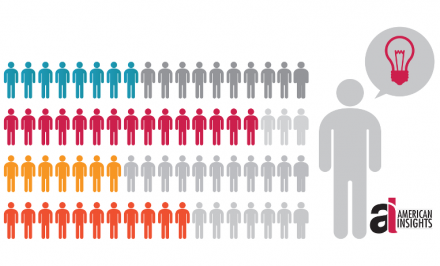By Pearce Godwin, Insights Director
Now within 100 days of Election Day, we are seeing a higher frequency of polling on the North Carolina Senate Race between incumbent Kay Hagan and House Speaker Thom Tillis. The attention of the political world is turning toward North Carolina as our race may very well be the decisive tipping point for control of the United States Senate. Republicans require a net gain of six seats to wrest control from Democrats. Three Republican pickups are almost assured – in South Dakota, West Virginia and Montana. Democrats are on offense in Georgia and Kentucky, hoping to steal GOP seats in those states, but the Republican candidates are holding strong. Assuming these five races don’t offer any game changing surprises, control of the upper chamber will come down to the seven Democrat held seats currently rated as toss ups by the Cook Political Report: Alaska, Arkansas, Colorado, Iowa, Louisiana, Michigan and North Carolina.
Based on the latest polling and models, Arkansas is the most likely Republican pickup among the toss ups followed by Louisiana, North Carolina, Iowa, Alaska and Colorado. Note that North Carolina, as 6th most likely pickup, would hand Republicans their 51st seat and majority control of the Senate. The NYT Upshot model currently gives Republicans a 53% chance of winning the majority, while Nate Silver pegs the probability at 60%. The more aggressive Washington Post Election Lab model gives the GOP an 82% chance of control but heavily favors Hagan in North Carolina at 98%. Upshot gives Senator Hagan a 53% chance of holding her seat, while Silver puts even money odds on NC at 50-50.
Regarding the Hagan-Tillis race, Nate Silver says, “Recent polling has shown Hagan slightly ahead of Tillis. But the polls are of dubious quality — and some are of registered voters, a big deal in North Carolina, where midterm-year turnout looks a lot different from turnout in presidential years. Some polls also give a fair amount of the vote to the Libertarian candidate, Sean Haugh — with most of those votes presumably taken from Tillis — but third-party candidates often see their polling fade down the stretch.”
The American Insights Trends Chart on the North Carolina race now indicates a dead heat, with the two major candidates tied at 42%. We last showed the candidates tied two months ago, June 8th, but they had polled steadily within a three-point margin of error since the beginning of 2014. Over the last two months, Senator Hagan ran ahead to the largest lead of the year according to the polls. On July 20th, our AI Trend Chart gave Hagan a six point advantage at 41-35. Her short lived bubble was driven by polls from Public Policy Polling (+5), Civitas (+6) and another PPP (+7). The gap has closed over the last two weeks as a result of polls from the New York Times (Tillis +1), Civitas (Hagan +2) and Rasmussen (Tillis +5). HuffPost Pollster gives Hagan a 0.9 percent lead, while the Real Clear Politics average stands at Tillis +1.3.
These topline numbers necessitate a couple of important points. Most conspicuously, two of the three most recent polls chose not to include Libertarian candidate Sean Haugh. The third, Civitas, asked the senate ballot with and without Haugh. With Haugh in the mix, Civitas found Hagan leading by two points, 41-39, but on the head to head between only Hagan and Tillis, the poll gave Tillis the two point advantage, 45-43. While both results fall inside the poll’s margin of error, it’s clear that including the third-party candidate in polling makes a difference.
A lot has been written about the potential impact of Haugh’s Libertarian candidacy on the outcome of the race. A healthy dose of skepticism is in order when looking at Haugh’s current poll numbers, 8% in our Trend Chart. Michael Cobb, a professor at NC State and author of the terrific Margin of Error blog for WRAL, points out, “No Libertarian candidate in North Carolina has received more than 3.3 percent of the vote in a U.S. Senate race since 1992. Interestingly, Haugh also ran in 2002, garnering just 1.5 percent of the vote.” The Washington Post also takes a look at how Libertarian candidates have historically faded in polling as the election approaches and even more dramatically underperformed polls at the ballot box. The chance that Haugh will earn a vote share in the upper single digits is very low, but his presence on the ballot does have the potential to swing a very close election and is certainly affecting the polling at this point in the race.
The second, much discussed, feature of recent polling in North Carolina is the New York Times’ use of an opt-in online panel by YouGov for their polling of races across the country. The use of the unconventional methodology by one of the preeminent media outlets in the country has generated heavy criticism due to its inherent methodological constraints.
In our Signature Polls, American Insights employs a mixed mode “triple helix” methodology incorporating landline, cell phone and online respondents. We believe this mixed method mitigates the shortcomings of any one mode while allowing us to achieve the most representative sample and accurate data possible. With 40% of US households now cell-phone only, landline-only surveys are unacceptable. Supplementing conventional landline surveys with a healthy share of cell phones as well as a large, diverse online panel can reap the advantages of each method in a world in which historically low response rates have handicapped the efficacy and statistical value of conventional methods in survey research.
Any way you slice it, the North Carolina senate race is currently a jump ball. Expect to see money, messages and media, along with polling, flood into North Carolina over the coming weeks as the fight for control of the United States Senate plays out in our backyard.























SOCIAL COUNTER
To RSS Feed
Followers
Fans